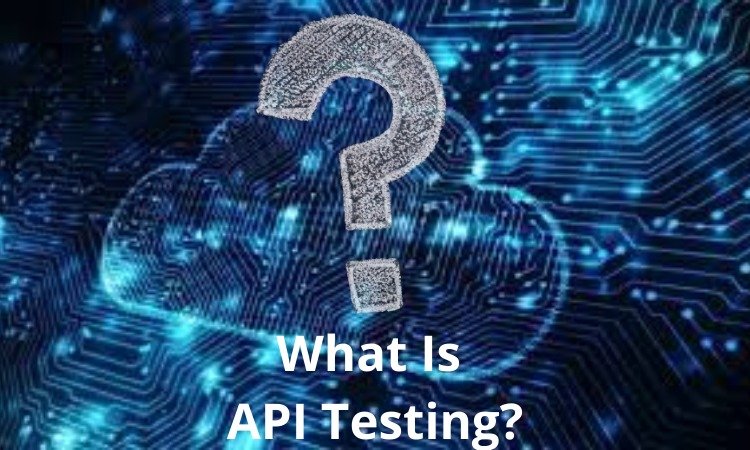API Testing: Best Practices Everyone Should Know
In the rush of building applications, connecting services, and transferring data are equally imperative. In such a scenario, Application Programming Interfaces (APIs) come to the rescue. They are a solid medium in engaging end-to-end business processes. Not just this, but API testing is a boon with which one can determine the product status in the development process. Besides, if you have missed out on breaches, API testing is quick enough to ascertain them.
However, for the smooth working of API testing, it is advisable to follow some guidelines. Therefore, we have come up with an API testing checklist for a seamless working experience. Let’s see what it is!
9 Best Practices for API Automation Testing
1. Have the IT team by your side
One of the key features in the API testing guide is to have the supervising IT team by your side. The ones who will execute the tests. Having them will reduce your workload because they have the expertise to determine when to conduct tests. Most importantly, if the APIs fail during testing, they’ll be present to evaluate it.
2. Arrangement for not repeating the code
Before starting everything over, create SUT (System Under Test) before adding any tests. It helps when you want to curb repeated code. However, there could be times when you may have to address the same actions or components. In such a scenario, it is advisable to create a commons library. It will help in minimizing the usage and make the whole process simple.
3. Maintain clarity
Writing clear tests plays a pivotal role while debugging. Such a scenario may occur when the tests start failing. Successful tests do not need attention, but failed tests need resources to determine the origin of the fiasco. And undertaking all this may become tedious and time-consuming. It may also result in missing deadlines or scrapping features.
Instead of doing this, it’s best to save your precious time and optimize the process by undertaking proper debugging. And to augment the process, maintain clarity in test cases.
4. Utilization of a complete API testing tool
Having a comprehensive API testing tool by your side is equally important. These tools play a pivotal role in effortless testing and tracking the performance of API. Besides, some offer additional features as well, like creating multi-step testing scenarios, automated API documentation, etc. However, one must note that some tools are free while some require procurement.
5. Have production conditions during API Testing
When a developer is in the testing phase, it is advisable to have conditions in place. These conditions should be the ones that an API may come across in the production phase. With conditions in place, it will become easy to ascertain that the APIs are functioning properly. It will also reflect their ability in the working environment. Besides, it acts as a breakthrough for testers to evaluate issues and resolve them at the earliest.
6. Ensure to undertake ‘negative’ testing
One of the API testing best practices is to monitor positive responses like request completion, data validation, etc. But one should also opt to test negative results. This process helps in mapping the performance of an API when dealing with hurdles. For example, if a user feeds invalid data, does he/she get an error message, or the application shut down abruptly? This drill helps in enhancing the performance of API testing and assimilates with user error.
7. Monitor security checks
We live in the age of technology, and cyber-crimes are at their peak. Some intruders will try attacking your businesses through applications. Therefore, have API security testing test cases in place. Ensure to check your APIs for any security breach or flaws. Explore testing tools offering security tests and scanning. However, it is advisable to have a security specialist by your side.
8. Limit dependencies wherever possible
There are times when API testing depends on external essentials like third-party services or servers. These factors are called dependencies. Developing unavailable functionality is also a tedious task. For example, having a payment gateway that is unavailable in certain countries is nothing but a dependency. If the functionality is not going to work in that country, there’s no use having it. Therefore, it is best to minimize such external dependencies for a faster and efficient testing procedure.
9. Keep a track of all API responses from the past
The IT industry, including API Testing, has witnessed evolution like never before. However, as a tester, there are many times you come across errors. And it is imperative to have resources for reference. Sometimes, you may find answers in the API testing cases made in the past. Therefore, in whichever era you belong to, maintain a diary of responses made during your API procedure. The tester from the present time can refer to past notes and evaluate the saved answers from previous builds. Knowledge never goes out of the league!
We hope the API testing checklist has helped you get an idea about the whole procedure. If you are still wondering what is API testing? You must join an efficient API testing training institute in Pune. If you are speculating which institute? Keep reading.
Cyber Success, Best API Testing Training Institute
Cyber Success is not a usual API testing training institute because it strikes a perfect balance between practical and theoretical knowledge. It has been tirelessly working to shape resourceful software engineers for a brighter tomorrow. And all this by maintaining transparency, hard work, and passion. Our mentors are our pillars who prep students for every challenge. If you want to be a part of this league, call on +91 9168665643, +91 9168665644, or send an email at hello@cybersuccess.biz.


